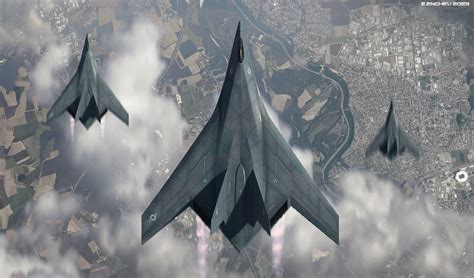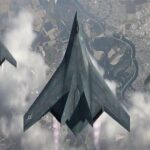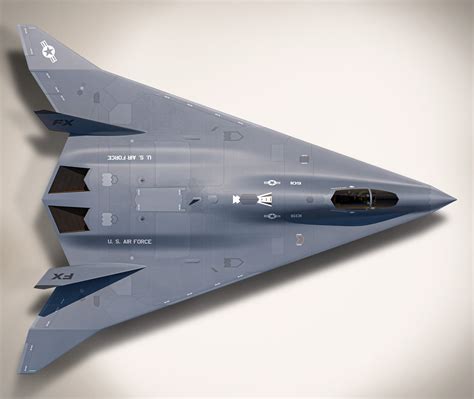
A principal designer of the B-2 stealth bomber, Noshir Gowadia, is serving a life sentence in a supermax prison for selling classified defense information to foreign governments, marking a significant breach of national security.
Noshir Gowadia, a brilliant engineer who played a pivotal role in developing the stealth technology that made the B-2 Spirit bomber virtually invisible to radar, now resides within the confines of a supermax prison, his legacy tarnished by espionage. His downfall represents a stark reminder of the potential vulnerabilities within even the most secure defense systems and the devastating consequences of betraying national trust. Gowadia’s case, meticulously investigated and prosecuted, revealed a calculated effort to profit from his intimate knowledge of classified military technology, ultimately jeopardizing national security. The details of his illicit activities, the extent of the information he compromised, and the motivations behind his actions continue to reverberate through the defense community, prompting heightened security measures and a renewed focus on insider threat detection.
Gowadia’s journey from a celebrated defense contractor to a convicted spy is a complex narrative of ambition, greed, and betrayal. He was convicted in 2010 on 14 counts, including conspiracy, violating the Arms Export Control Act, and transmitting classified information related to the B-2 bomber to foreign entities. The investigation revealed that Gowadia used his extensive knowledge of the bomber’s stealth capabilities to design and market stealth technology to countries that potentially posed a threat to the United States. “The evidence presented at trial showed that Gowadia used his knowledge of classified information to assist foreign countries in designing weapons systems that could be used against the United States,” stated a Department of Justice press release following his conviction.
The B-2 Spirit bomber, a cornerstone of the U.S. Air Force’s strategic arsenal, owes much of its groundbreaking stealth capabilities to Gowadia’s expertise. His understanding of radar evasion techniques and his ability to translate complex scientific principles into practical engineering solutions were instrumental in the bomber’s development. However, this very expertise became the weapon he wielded against his own country. Prosecutors argued that Gowadia’s actions not only compromised national security but also endangered the lives of American servicemen and women. The information he shared could have allowed adversaries to develop countermeasures against the B-2, rendering its stealth capabilities obsolete and putting American forces at risk.
The investigation into Gowadia’s activities began in 2005, after authorities received information suggesting that he was offering classified information to foreign governments. The ensuing investigation involved a complex web of surveillance, document analysis, and international cooperation. Investigators meticulously pieced together evidence of Gowadia’s contacts with foreign officials and his efforts to market his stealth technology expertise. They uncovered documents and electronic communications that detailed his proposals and the classified information he shared. The evidence painted a clear picture of a man driven by financial gain, willing to betray his country for personal enrichment.
One of the key pieces of evidence presented at trial was a detailed technical paper that Gowadia had written, outlining the principles of stealth technology and providing specific information about the B-2 bomber’s radar cross-section. This paper, prosecutors argued, contained highly classified information that could be used by adversaries to develop countermeasures. Gowadia claimed that the information in the paper was unclassified and publicly available, but the prosecution presented expert testimony that refuted this claim. Witnesses testified that the paper contained sensitive technical data that was not publicly known and that its disclosure would pose a significant threat to national security.
The trial lasted for several months and involved the testimony of numerous expert witnesses, including former Air Force officials, intelligence analysts, and engineers. The prosecution presented a compelling case, meticulously documenting Gowadia’s actions and demonstrating the potential harm they could cause. The defense attempted to portray Gowadia as a misunderstood genius, arguing that he was merely trying to share his knowledge and promote technological advancement. However, the jury ultimately rejected this argument and found Gowadia guilty on 14 counts.
Gowadia’s sentencing to life in prison without the possibility of parole sent a strong message that espionage and the betrayal of national trust would not be tolerated. The judge in the case emphasized the gravity of Gowadia’s crimes and the potential consequences of his actions. “This is a case that involves the betrayal of trust by someone who was in a position of great responsibility,” the judge stated during the sentencing hearing. “The defendant’s actions put the security of this country at risk.” He is currently incarcerated in a supermax prison, a facility designed to house the most dangerous and high-risk inmates in the federal system. His life now stands in stark contrast to the celebrated career he once enjoyed, a constant reminder of the devastating consequences of his choices.
The Gowadia case has had a profound impact on the defense community, prompting a comprehensive review of security procedures and a renewed focus on insider threat detection. The case highlighted the importance of safeguarding classified information and the need to identify and mitigate potential vulnerabilities within the defense industry. The Department of Defense has implemented stricter security protocols, including enhanced background checks, improved monitoring of employee activities, and increased training on insider threat awareness. The Gowadia case serves as a cautionary tale, reminding defense contractors and government employees of the importance of integrity and the potential consequences of betraying national trust.
The ramifications of Gowadia’s actions extend beyond the immediate damage caused by the disclosure of classified information. His betrayal has eroded trust within the defense community and raised questions about the effectiveness of existing security measures. The case has also highlighted the challenges of balancing the need for open communication and collaboration with the imperative to protect classified information. Defense contractors and government agencies must find ways to foster innovation and technological advancement while ensuring that sensitive information is adequately protected. The Gowadia case serves as a catalyst for ongoing efforts to strengthen security protocols and enhance insider threat detection capabilities.
The incident also led to increased scrutiny of defense contractors and their employees, with more rigorous background checks and monitoring procedures implemented. The goal is to prevent similar incidents from occurring in the future by identifying and mitigating potential security risks before they can materialize. This includes enhanced training for employees on the importance of protecting classified information and the consequences of unauthorized disclosure. The defense industry is also working to improve its cybersecurity defenses to protect against cyber espionage and data breaches. These efforts are aimed at creating a more secure environment for the development and deployment of advanced military technologies.
The B-2 Spirit bomber remains a vital component of the U.S. Air Force’s strategic deterrent, despite the Gowadia case. The bomber’s stealth capabilities continue to provide a significant advantage in modern warfare, allowing it to penetrate heavily defended airspace and deliver precision strikes against critical targets. The Air Force has invested heavily in upgrading the B-2’s avionics, sensors, and weapons systems to ensure that it remains a relevant and effective platform for decades to come. The Gowadia case has served as a reminder of the importance of protecting the B-2’s technological secrets and preventing them from falling into the wrong hands. The Air Force has implemented additional security measures to safeguard the bomber’s technology and ensure that it remains a valuable asset for national defense.
The Gowadia case underscores the critical importance of safeguarding classified information and maintaining the integrity of the defense industry. His actions serve as a stark reminder of the potential consequences of espionage and the need for constant vigilance in protecting national security. The case has prompted significant reforms in security procedures and insider threat detection, aimed at preventing similar incidents from occurring in the future. The Gowadia case will likely remain a significant chapter in the history of espionage and a cautionary tale for those who are entrusted with protecting the nation’s secrets. The legacy of Noshir Gowadia serves as a reminder that even the most brilliant minds can be susceptible to greed and the temptation to betray their country.
Frequently Asked Questions (FAQ)
-
Who is Noshir Gowadia?
Noshir Gowadia was a principal designer of the B-2 stealth bomber, playing a crucial role in developing its stealth technology. He was later convicted of espionage for selling classified defense information to foreign governments. “The evidence presented at trial showed that Gowadia used his knowledge of classified information to assist foreign countries in designing weapons systems that could be used against the United States,” stated a Department of Justice press release following his conviction.
-
What crimes was Noshir Gowadia convicted of?
Gowadia was convicted on 14 counts, including conspiracy, violating the Arms Export Control Act, and transmitting classified information related to the B-2 bomber to foreign entities. These crimes stemmed from his efforts to design and market stealth technology to foreign countries, potentially compromising U.S. national security.
-
What classified information did Gowadia disclose?
Gowadia disclosed highly classified information related to the B-2 bomber’s radar cross-section and stealth capabilities. This included a detailed technical paper outlining the principles of stealth technology, which prosecutors argued could be used by adversaries to develop countermeasures against the B-2.
-
What was the motivation behind Gowadia’s actions?
The primary motivation behind Gowadia’s actions appears to have been financial gain. He sought to profit from his knowledge of classified military technology by selling it to foreign governments, despite the potential consequences for U.S. national security.
-
What impact has the Gowadia case had on the defense community?
The Gowadia case has had a profound impact on the defense community, prompting a comprehensive review of security procedures and a renewed focus on insider threat detection. Stricter security protocols, enhanced background checks, improved monitoring of employee activities, and increased training on insider threat awareness have been implemented to prevent similar incidents from occurring in the future.
-
What is a supermax prison, and why is Gowadia incarcerated in one?
A supermax prison is a high-security facility designed to house the most dangerous and high-risk inmates in the federal system. Gowadia is incarcerated in one due to the severity of his crimes, which involved espionage and the betrayal of national trust, posing a significant threat to national security.
-
How did the investigation into Gowadia’s activities begin?
The investigation into Gowadia’s activities began in 2005 after authorities received information suggesting that he was offering classified information to foreign governments. This led to a complex investigation involving surveillance, document analysis, and international cooperation.
-
What was the B-2 Spirit bomber’s significance, and what role did Gowadia play in its development?
The B-2 Spirit bomber is a cornerstone of the U.S. Air Force’s strategic arsenal, known for its groundbreaking stealth capabilities. Gowadia played a principal role in developing this stealth technology, using his expertise in radar evasion techniques and translating complex scientific principles into practical engineering solutions.
-
What was the defense’s argument during Gowadia’s trial?
The defense attempted to portray Gowadia as a misunderstood genius, arguing that he was merely trying to share his knowledge and promote technological advancement. However, the jury ultimately rejected this argument and found Gowadia guilty on 14 counts.
-
What message did Gowadia’s sentencing send?
Gowadia’s sentencing to life in prison without the possibility of parole sent a strong message that espionage and the betrayal of national trust would not be tolerated. It emphasized the gravity of his crimes and the potential consequences of his actions, serving as a deterrent to others who might consider similar acts.
-
How has the Department of Defense responded to the Gowadia case?
The Department of Defense has implemented stricter security protocols, including enhanced background checks, improved monitoring of employee activities, and increased training on insider threat awareness. These measures aim to strengthen security and prevent future incidents of espionage.
-
What are some of the challenges in balancing open communication and protecting classified information in the defense industry?
The defense industry faces challenges in fostering innovation and technological advancement while ensuring that sensitive information is adequately protected. Striking this balance requires careful consideration of security protocols, employee training, and the implementation of robust cybersecurity defenses.
-
How is the Air Force ensuring the B-2 Spirit bomber remains a relevant platform for national defense?
The Air Force has invested heavily in upgrading the B-2’s avionics, sensors, and weapons systems to ensure that it remains a relevant and effective platform for decades to come. Additional security measures have also been implemented to safeguard the bomber’s technology and prevent it from falling into the wrong hands.
-
What is the long-term impact of the Gowadia case on the defense community?
The Gowadia case will likely remain a significant chapter in the history of espionage, serving as a cautionary tale for those entrusted with protecting the nation’s secrets. It has prompted lasting reforms in security procedures and insider threat detection, aimed at preventing similar incidents from occurring in the future and reinforcing the importance of integrity in the defense industry.
-
What specific types of security enhancements have been implemented since the Gowadia case?
Specific security enhancements include more rigorous background checks for defense contractors and their employees, enhanced monitoring procedures, increased training on the importance of protecting classified information and the consequences of unauthorized disclosure, and improved cybersecurity defenses to protect against cyber espionage and data breaches.
-
How does Gowadia’s current life in a supermax prison compare to his previous career?
Gowadia’s current life in a supermax prison is a stark contrast to his celebrated career as a principal designer of the B-2 stealth bomber. His downfall serves as a constant reminder of the devastating consequences of his choices and the betrayal of national trust.
-
What role did international cooperation play in the investigation of Gowadia?
International cooperation was crucial in the investigation of Gowadia, as authorities pieced together evidence of his contacts with foreign officials and his efforts to market his stealth technology expertise. This cooperation involved sharing information and coordinating investigative efforts across different countries.
-
What were some of the key pieces of evidence presented at the trial against Gowadia?
One of the key pieces of evidence was a detailed technical paper that Gowadia had written, outlining the principles of stealth technology and providing specific information about the B-2 bomber’s radar cross-section. This paper, prosecutors argued, contained highly classified information that could be used by adversaries.
-
How did Gowadia attempt to defend his actions during the trial?
Gowadia claimed that the information in the paper was unclassified and publicly available. However, the prosecution presented expert testimony that refuted this claim, demonstrating that the paper contained sensitive technical data that was not publicly known and that its disclosure would pose a significant threat to national security.
-
What specific elements of the B-2’s stealth technology were compromised by Gowadia’s actions?
Gowadia’s actions compromised specific elements of the B-2’s stealth technology related to radar evasion techniques and its radar cross-section. This information could have allowed adversaries to develop countermeasures to detect and track the B-2 bomber, diminishing its stealth capabilities.
-
How might the information Gowadia sold have been used by foreign governments?
The information Gowadia sold could have been used by foreign governments to design weapons systems capable of detecting and targeting stealth aircraft like the B-2, thereby neutralizing its strategic advantage. It could also have informed the development of new radar technologies or electronic warfare systems.
-
What steps are being taken to prevent future insider threats within the defense industry?
Steps being taken to prevent future insider threats include enhanced background checks, continuous monitoring of employees with access to classified information, mandatory security awareness training, and the implementation of advanced data loss prevention systems to detect and prevent unauthorized data exfiltration. The focus is on creating a culture of security and vigilance.
-
How has the Gowadia case influenced cybersecurity practices within the Department of Defense?
The Gowadia case has heightened awareness of the need for robust cybersecurity practices. This includes enhanced encryption of sensitive data, stricter access controls, regular security audits, and the implementation of advanced threat detection systems to identify and respond to potential cyberattacks. The Department of Defense is also investing in training personnel to recognize and report potential cybersecurity threats.
-
What is the significance of Gowadia’s life sentence without the possibility of parole?
Gowadia’s life sentence without the possibility of parole underscores the severity of his crimes and serves as a powerful deterrent to others who might contemplate similar acts of espionage. It reflects the gravity of betraying national trust and the potential consequences for U.S. national security. It also assures the public that such breaches of security will be met with severe punishment.
-
Beyond technical data, what other types of information did Gowadia potentially compromise?
Beyond technical data, Gowadia potentially compromised information about U.S. military strategies, operational capabilities, and vulnerabilities related to the B-2 bomber. This could have included details about mission planning, target selection, and defensive countermeasures. The broader implications of this compromised information could have impacted U.S. foreign policy and military readiness.









